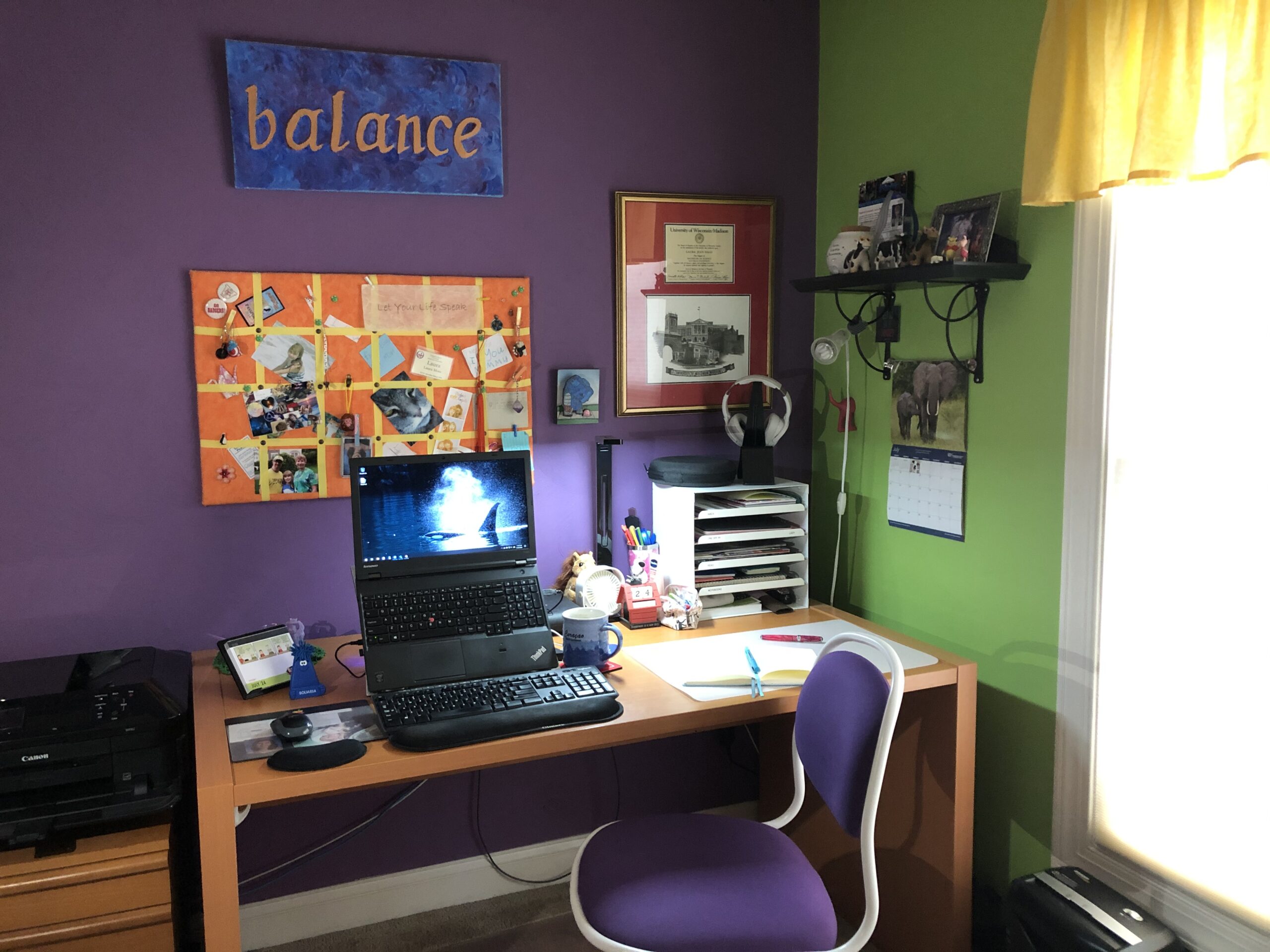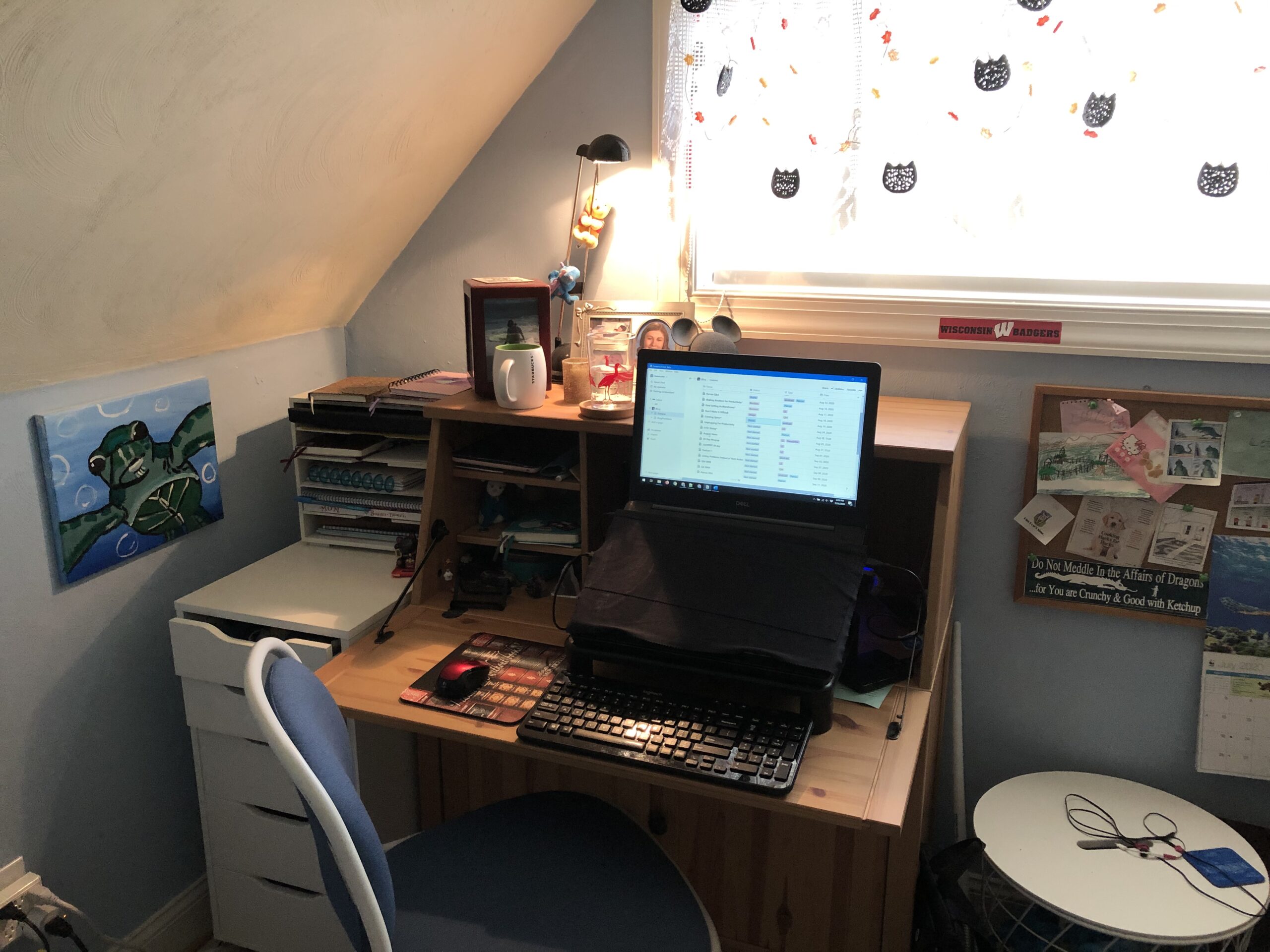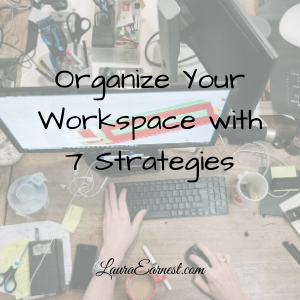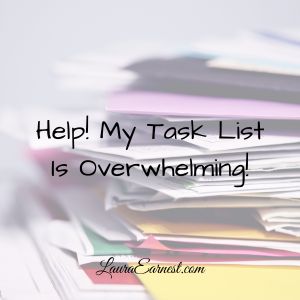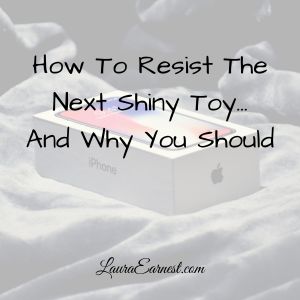If you had to show a photo of your workspace right now, would you be comfortable? You, like most people, probably need to have a session to organize your workspace before you could show it off.
We recently had a “show your workspace” thread come up for my company. This was a part of an ongoing Teams campaign to keep us connected during the COVID isolation. As I looked at some of my co-workers’ workspaces, I wondered how they could get anything done. Their desks are masses of equipment surrounded by piles of stuff.
At a former job, the level of disorganization was so bad they made the lowest level managers attend organizational seminars. While I believe those seminars are good in theory, most people didn’t apply what they learn, and ended up going back to the same old mess.
I challenge you to look around your workspace right now. Even if you think “it’s not that bad”, I would ask you if you can tell me about all the hidden spots – drawers, organizers etc. If you can’t, then there is room for improvement.
So today I’m going to look 7 strategies to organize your workspace – and give you tips so that it stays that way.
Collect Like Items Together
Put all your writing implements in one place. Same with paperclips, tape, sticky notes, notebooks, etc. Chances are you have things everywhere. Keeping things together gives you more of a chance of remember where things are. So when you are looking for the permanent marker, you will know it’s with your pens, and not have to go hunting through the drawers to find it.
Pro tip: use organizers and mint tins to keep the smaller things neat. Using a magnetized paper clip cup like this one* ensures that they won’t ever spill out. Using old Altoids tins to hold tacks or butterfly clips likewise minimizes the risk of a spill.
Get Rid of the Excess
I collect pens, or rather, pens find their way to my desk. This is amusing to me because I don’t use the office-supplied pens, but rather use my own (I’m a lefty and very particular about my writing implements). Yet whenever I clean out my desk when I change assignments, I find at least a dozen office-supplied pens. I try to start each new assignment with three things in my pen cup: a black pen, a highlighter and a permanent marker.
You should also get rid of excess equipment. When was the last time that you used that gadget on the corner of your desk? If you don’t use it at least weekly, put it away. Chances are you won’t miss it.
Pro tip: keep only what you need within reach. That means a single pen, a single pad of sticky notes, and the minimal desk equipment. Everything else should be brought in on an as-needed basis from the supply closet, or stored in an inconvenient drawer. At the end of the day, put everything away.
Get Rid of the Trash
It amazes me how much trash gets left in our working spaces. Not only food wrappers, but things like drink containers from lunch, discarded calendar pages and sticky notes that no longer serve a purpose.
I often put off getting rid of discarded calendar pages because I can use them for notes, and the recycle bin is a whole 10 steps away. But I have found that since working from home, I never need them for notes, and it makes me feel more focused not to have the papers on my desk.
Pro tip: keep the trash from starting at your desk. Don’t eat there, and dispose of anything trash-like as soon as you see it.
Get Rid of the Cups and Mugs
I’m a programmer. I live an over-caffeinated life, and I turn caffeine into code. There is usually at least one mug at my desk. But I also drink water to stay hydrated and alert. So that means that there is a water glass at my desk.
This is not a problem until there are multiples. Either I forget to clear the dirty ones off the desk at the end of the day, or I forget that I had a mug/glass there and start another.
Get rid of any cups or mugs from which you are not currently drinking. Throw out the cold nasty coffee with the milk skin on top. Get rid of the water in the cup from yesterday (you’d be surprised what crawls around at night in most offices). Clean your cups and mugs at the end of every work session and put them away. This way you’ll only have the current ones in your space.
Pro tip: use coasters as a visual reminder of what you can have out. I have two coasters: one for hot, one for water. If I am holding a beverage and both of my coasters are occupied, I have to get rid of the one I’m not using. I love cork coasters* because they absorb all condensation and drips.
Get Rid of Non-Working Items
Face it, the broken stapler isn’t going to heal itself. Dried pens won’t come back to life. And bent staples aren’t going to straighten themselves. Get rid of broken items. The aura these non-working things give off affects your working game.
Pro tip: twice a year, go through your office supplies and get rid of anything that doesn’t work, or doesn’t work for you. Don’t keep things that you can’t or won’t use.
Limit the Papers
Having too much on your desk at any one time is a distraction. You may not be consciously thinking about proposal X while working on presentation Y, but if the papers are in front of you, every time your eyes move over them proposal X will go through your mind. Gather up the papers you aren’t working on right now and get them out of the way.
If you absolutely have to keep papers, organize them in either a file or in a shelf organizer. I personally favor shelf organizers* because I can designate a shelf per project and label them. If I run out of shelves, I should probably not take anything else on.
Pro tip: stop using paper as much as possible. I never thought I could do without printouts until I didn’t have access to a printer for six months at my current assignment. I realized paper was a habit, and it was faster to find things when they were on my computer.
Limit the Visual Clutter
We all like to personalize our workspaces. But how many pictures from your children go up before you don’t see them anymore? Just like the working papers above, if your eyes pass over pictures of other places and people you aren’t with frequently, do you really think your attention is truly on your work? If you aren’t seeing these items, why have them? Limit your personalizations to a few meaningful pieces.
Pro tip: try taking everything down and putting back one or two items. Then make a note to rotate things every couple of weeks.
Over To You
How’s your workspace? Cluttered? Distracting? Or peaceful and conducive to work? Or somewhere in between? See what you can take care of today.
For Fun
Here are the pictures of my two workspaces. The top one is where I do my billable client work. The bottom is my writing studio.
